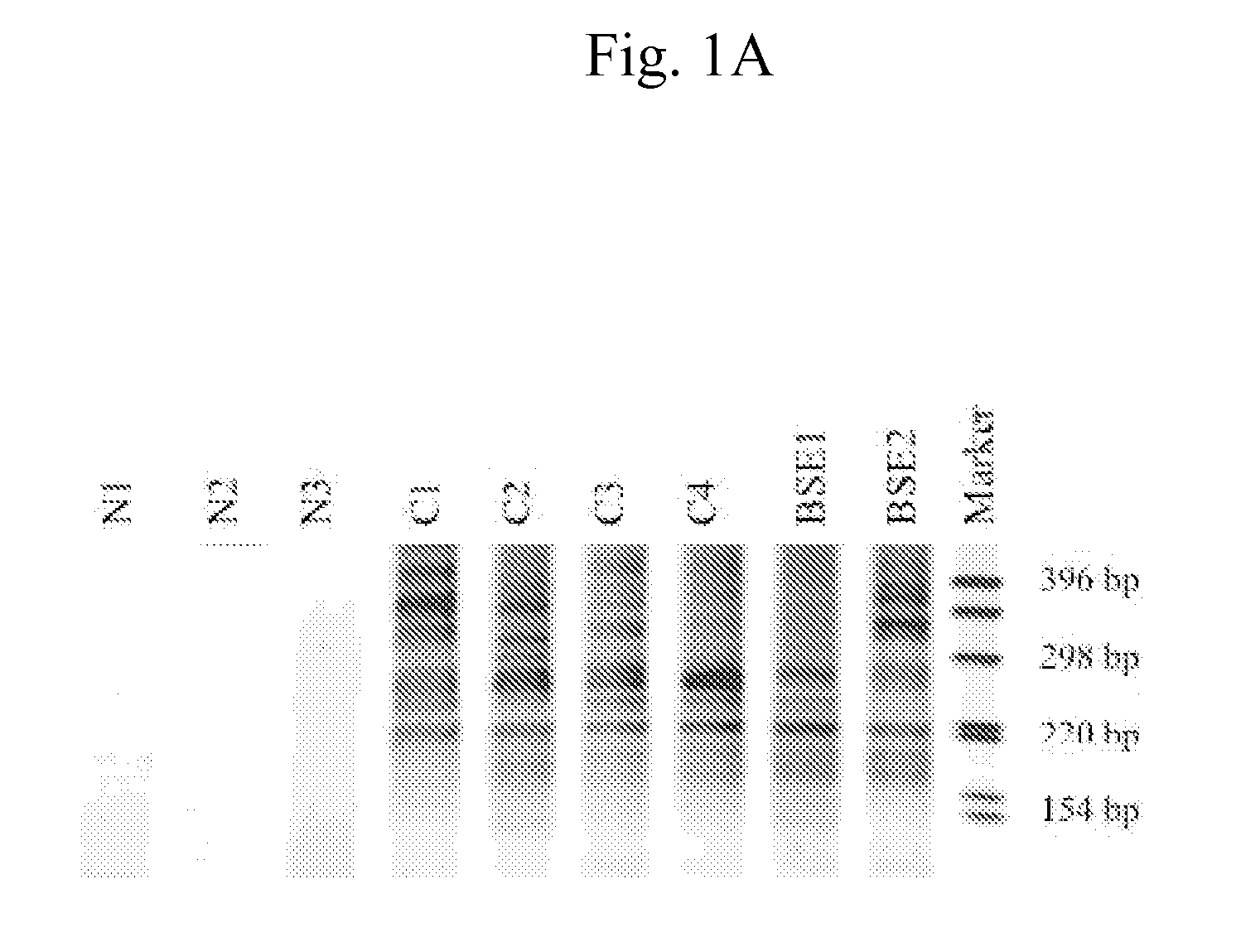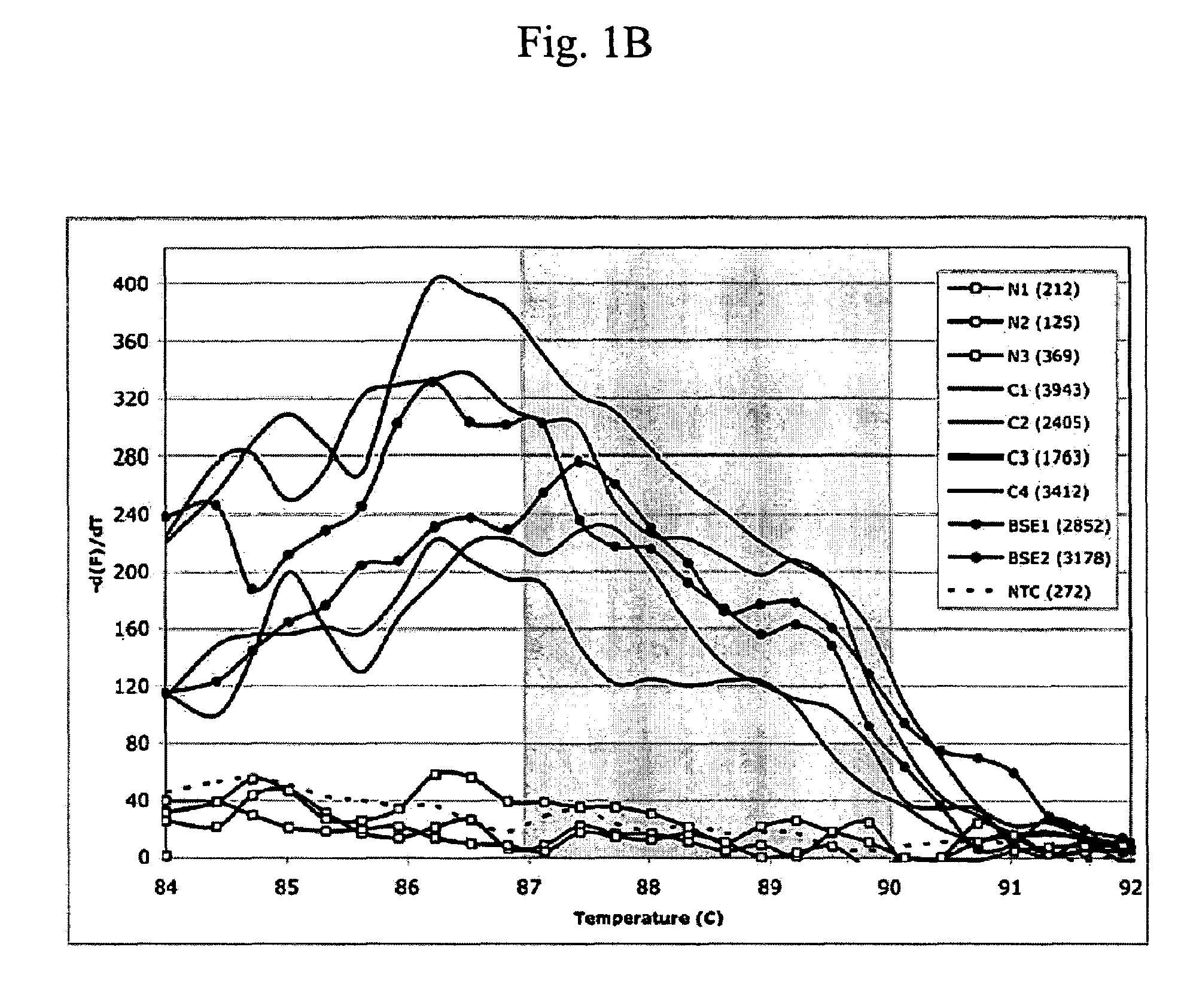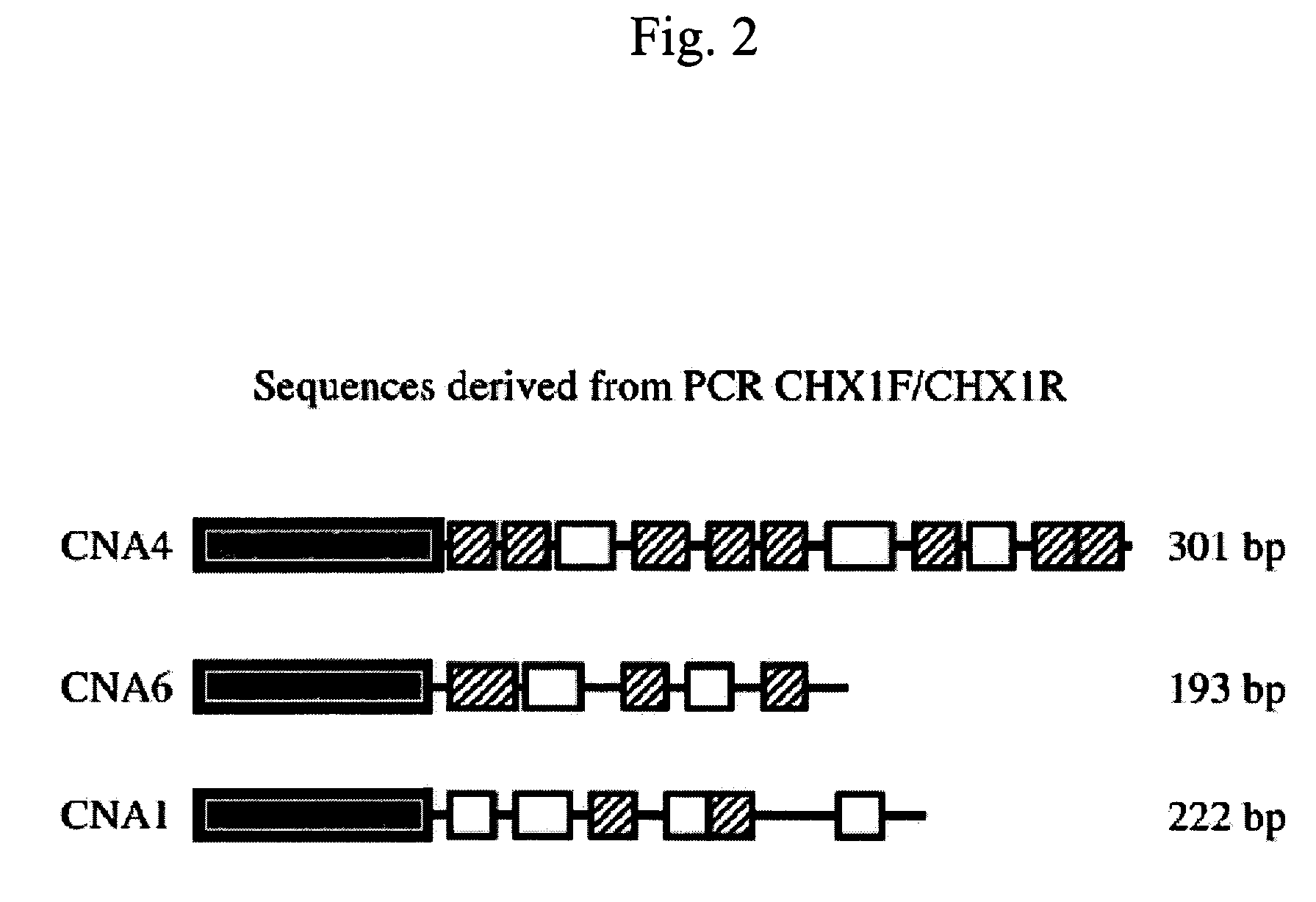Detection of nucleic acids to assess risk for bovine spongiform encephalopathy
a spongiform encephalopathy and nucleic acid technology, applied in the field of nucleic acid detection to assess the risk of bovine spongiform encephalopathy, can solve the problems of insufficient detection of transmissible spongiform encephalopathy, difficult detection of early stage spongiform encephalopathy, and insufficient sensitiveness of current tests to fully protect against the entry of bse cattle, so as to increase the risk of bs
- Summary
- Abstract
- Description
- Claims
- Application Information
AI Technical Summary
Benefits of technology
Problems solved by technology
Method used
Image
Examples
example 1
Detection of Animals at an Increased Risk for BSE
[0067]This example describes detection of an increased risk for BSE. In summary, a PCR using non-coding region primers in a differential display approach was used on the sera from four confirmed cases of BSE, 135 BSE-exposed cohort animals associated with 8 confirmed BSE cases and 176 healthy, PrPres-negative control cows. All 4 sera from BSE confirmed cases were reactive in the assay. BSE-exposed cohorts had a range of 33% to 91% reactive individuals per cohort, compared to only <1% among healthy controls (p<0.001). Cloning of the reactive PCR products revealed bovine germ-line rearranged sequences. All sequenced PCR circulating nucleic acid (CNA) fragments from BSE and BSE-exposed cows shared an 80-mer base sequence homologous to the SINE Bov-tA found in the flanking regions of the bovine prion coding gene exons.
[0068]Experiments were performed as follows:
Experimental Protocol
[0069]Animals: Holstein cows primarily located in northwe...
example 2
Use of Alternative Primer Sets to Identify Animals at Risk
[0098]Any number of primer pairs can be used in the detection methods of the invention. This example provides alternative exemplary primer pairs.
[0099]Primer #55 corresponds to 18 nucleotides within a consensus SINE sequence (M26330 Bovine short interspersed repetitive sequences found in genomic DNA) that repeats itself multiple times in bovine genome in direct and reverse orientation, including twelve repeats within PrP gene (AJ298878 Bos taurus PrP gene for prion protein). Primers #60-63 correspond to PrP sequences located 150-1000 bp upstream (60F, 61F, 62F, and 63F) or downstream (60R, 61R, 62R, or 63R) from the consensus primer sequence #55.
[0100]In addition to these primers, a control set of primers (PG01, PG02) directed against the non-translated region of enteroviruses was used.
[0101]
Primer5′-cttgcctggagaatccca-3′(SEQ ID NO:3)55FPrimer5′-gggattctccaggcaaga-3′(SEQ ID NO:4)55RPrimer5′-gcatgttcctttcagaa-3′(SEQ ID NO:5)60...
example 3
Use of Serum or Plasma as Acellular Sample
[0103]This example shows that plasma samples can also be used. The analysis was performed using the primers CHX-1F and CHX-1R and PCR conditions shown in Example 1. The results using plasma samples were correlated to results obtained analyzing serum samples from the same animals. The results are shown in FIG. 7.
[0104]The above examples are provided to illustrate the invention but not to limit its scope. Other variants of the invention will be readily apparent to one of ordinary skill in the art and are encompassed by the appended claims.
[0105]All publications, patents, accession numbers, and patent applications cited herein are hereby incorporated by reference for all purposes.
PUM
| Property | Measurement | Unit |
|---|---|---|
| temperature | aaaaa | aaaaa |
| temperature | aaaaa | aaaaa |
| temperature | aaaaa | aaaaa |
Abstract
Description
Claims
Application Information
 Login to View More
Login to View More - R&D
- Intellectual Property
- Life Sciences
- Materials
- Tech Scout
- Unparalleled Data Quality
- Higher Quality Content
- 60% Fewer Hallucinations
Browse by: Latest US Patents, China's latest patents, Technical Efficacy Thesaurus, Application Domain, Technology Topic, Popular Technical Reports.
© 2025 PatSnap. All rights reserved.Legal|Privacy policy|Modern Slavery Act Transparency Statement|Sitemap|About US| Contact US: help@patsnap.com



